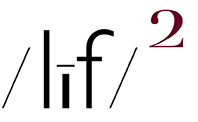(embiggenable)
(embiggenable)
(embiggenable)
(embiggenable)
AT SOME POINT OVER THE PAST FEW WEEKS I came across an entry on a blog-don’t remember which-regarding the notion of creativity. I did not like the article for a variety of reasons; the primary reason for that reaction was the fact that, iMo, it was not very creative.
That written, while the author did not dole out the usual drivel that infects the trash heap of how-to-be-creative advice books-use a different angle / POV, photograph in different light, shoot abstracts, try creative blur, etc.-he was selling the idea that creativity flows from challenge. That given a particular “problem” to “solve”-i.e., in the photo world, making interesting pictures-creativity will spring to life. That’s cuz , you know, creative juices will start to flow.
Now I am not writing that there is not a grain of truth in that idea but…if a problem solver does not have an imagination quotient-the faculty or action of forming new ideas, or images or concepts in the mind without any immediate input of the senses-capable of getting outside of the “box”, there ain’t gonna be much tasty “juice” to be had.
I write that keeping in mind the words of Einstein that:
“I believe in intuitions and inspirations…I am enough of the artist to draw freely upon my imagination….imagination is more important than knowledge.”
In that statement, Einstein was not discounting his plentiful knowledge (based upon his study and experimentation, aka: knowledge). Rather, it would be safe to infer that, based upon Einstein’s life work, that in order for one’s imagination to take you to worthwhile places, you need a sturdy foundation of knowledge to build it upon.
Which leads me to my idea of creativity or, at the very least, the source of creativity…the proverbial phrase, you are what you eat.
To wit, while that phrase was originally written to be quite literal-In 1826, the French lawyer Anthelme Brillat-Savarin wrote in Physiologie du Gout, ou Meditations de Gastronomie:
"Dis-moi ce que tu manges, je te dirai ce que tu es." - Tell me what you eat and I will tell you what you are.
-I have always used the phrase as a metaphor of sorts to suggest that what you “eat”-i.e., what things and ideas you surround yourself with*-influence, in fact, determine who you are and how you live your life. Therefore, re: in the world of art and art making, if one is surrounded by a culture of pablum and dreck, chances are that your imagination is limited by that input. Or, to use another common phrase, garbage in, garbage out.
That written, I also believe that not every person has the drive inspired by a native / natural / preternatural desire to probe / “investigate” the boundaries of conventional living and thinking. That is, an innate attraction to exploring new ideas and concepts (in any area of human endeavor). Call it curiosity if you prefer. Being safe, not sorry, is the order of the day in their world.
All of the preceding written, I believe the most creative act in the making of photographs is the decision / inclination toward what to photograph. That is to write, the answer to the question, what is it that you want to “eat”? However…
…once answered, that choice leads to yet another “problem” to be solved. The concept of …
It ain’t what you eat, it’s the way how you chew it. ~ Sleepy LaBeef (album title)
… which is a topic for another entry.
*Ok, ok. There’s also the DNA / genetic thing.
